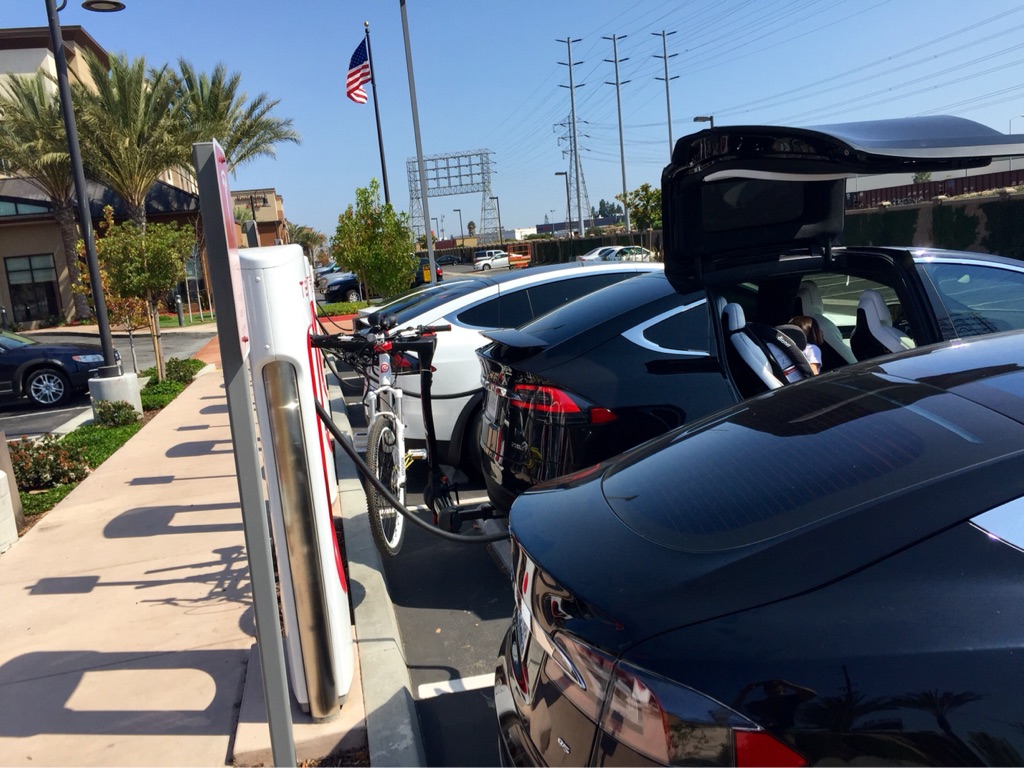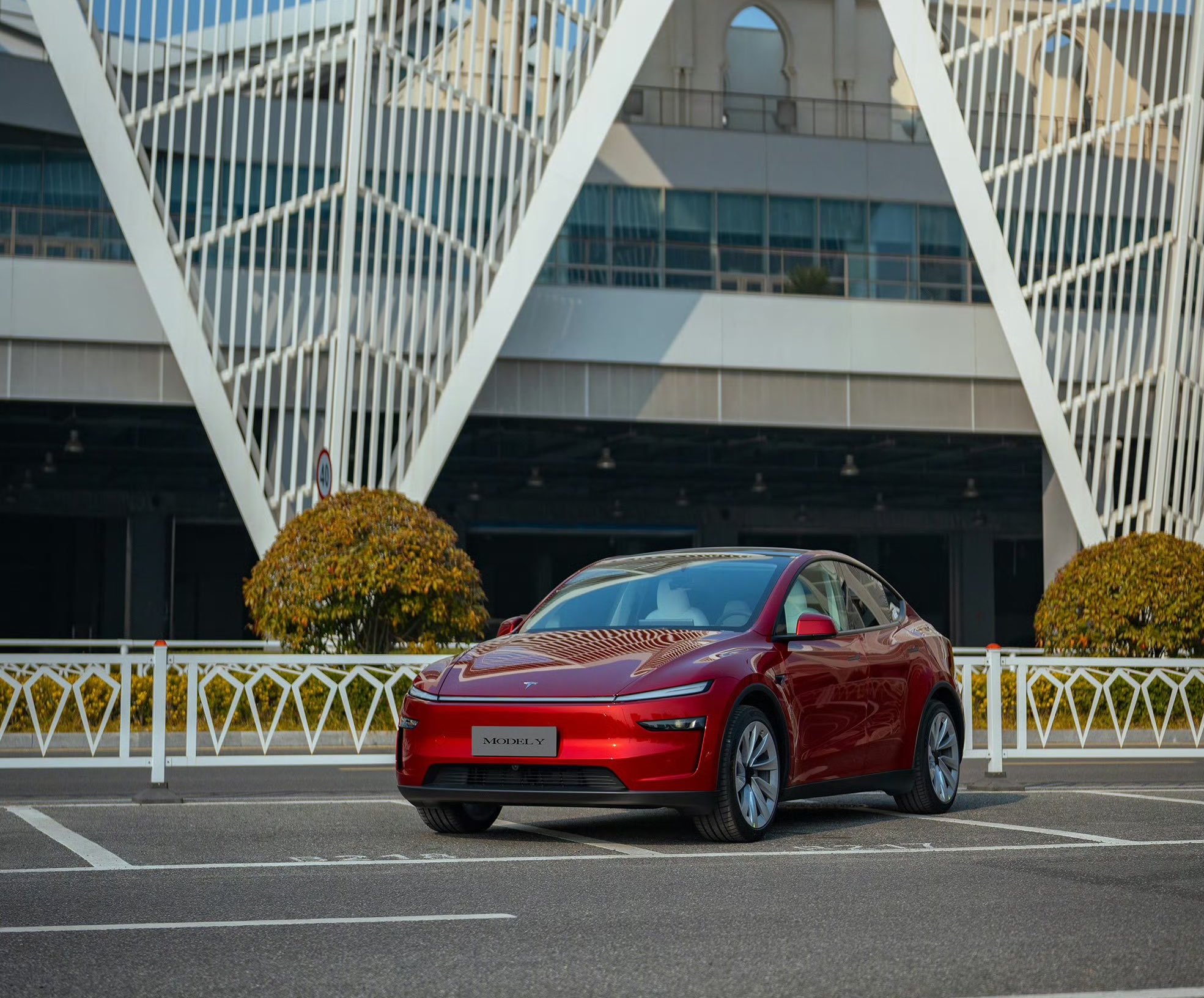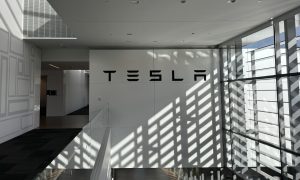

Tesla Model 3
Resistance to EVs: Legacy auto history shows pushbacks are nothing new
It shouldn’t come as a surprise to anyone in the auto industry these days that future cars will need to produce either zero or low emissions. Even if customers aren’t yet demanding all-electric vehicles at the same level as gasoline and diesel-powered vehicles, they certainly aren’t demanding poor fuel efficiency and high levels of tailpipe emissions, either. So, why is there pushback against regulations that demand better transportation products for both people and the environment?
The California Emissions Standard
In the United States, a primary driver of new vehicle emissions standards comes from California’s Low-Emission Vehicle (LEV) and Zero-Emission Vehicle (ZEV) standards. California has unique, critical pollution problems which led to a special exemption in the federal Clean Air Act allowing the state to regulate its own car emissions rather than be limited to (lower) national regulations. While other states can’t write their own laws, they can opt into following California’s standards. So far, 14 states have adopted the LEV standards, and 10 of those have adopted the ZEV standards.
California’s current standards place caps on tailpipe emission levels and mandate a certain number of cars produced each year by manufacturers to be ZEVs and/or plug-in hybrids (PHEVs) on an increasing scale through the year 2025. The number required is calculated by a percentage of credits issued based on electric driving range – the more range the more credit received. In 2018, for example, 4.5 percent credits of new cars produced by a car maker must be ZEVs/PHEVs, and that amount increases to 22% in 2025. When other states adopt California’s emissions standards, the ZEV/PHEV numbers usually come with them.
Auto manufacturers’ history of standing against regulation
The primary objection of the major players in the auto industry to meeting these requirements is the time allotted. Specifically, automakers only have seven years to transition almost a quarter of their fleets to a completely different power source than they’ve been using for decades. At first glance, this seems fair. After all, most car makers have huge bureaucracies and systems in place that take a lot of effort to change in major ways. However, using history as our guide, this reasoning falls flat. The current regulatory environment facing car manufacturers isn’t something new, and neither is the lack of merit in their pushback against it.
In the 1960s, California attempted to implement automotive pollution controls via a passive approach which waited for emissions-reducing devices to be developed before regulating them. This was market-centric and took heavy consideration of the financial impact these devices would have on manufacturers to create in-house, and the auto industry claimed it couldn’t develop the tech needed for years to come. However, when third party devices were brought to market rather quickly (i.e. devices not produced by the car makers themselves, thus requiring purchase and/or licensing), the manufacturers quickly modified their engines to meet the emissions requirements. By doing this, automakers rendered the third party devices moot and wasted their time, effort, and resources. More importantly, car makers’ speedy response to the regulations once enforcement set in led to questions about industry collusion against emissions innovations.

This type of behavior by car makers led to what’s called “technology-forcing” regulations. In other words, because the auto industry has historically been resistant to improving their products purely for safety or environmental reasons on their own, the government has changed its regulatory approach to force the issue with penalties. It’s not that the government is trying to totally control the direction of tech development in the auto market, but rather that the industry has historically used monopolistic-type behaviors to stifle innovations that were in the public interest, which is the government’s job to protect.
Controlling what cars release into the air we breathe isn’t the only thing the auto industry has pushed back against, either. A 1983 US Supreme Court case involving restraint system requirements in cars described the auto industry’s resistance to mandatory airbags as “the regulatory equivalent of war.” Since the addition of air bag systems was costly and required certain redesigns in vehicles, car makers in the 1980s were motivated to prevent their requirement. Myths were spread including that they might cause accidents by going off inadvertently, they are too expensive, and that the public doesn’t want them. Sound familiar? Swap out accidental airbag deployment for Tesla car fires and the three myths sound just like the ones we hear about electric vehicles.
Today’s pushback by car makers
As natural as things like air bags are to us today as basic safety devices in our cars, their merits took time (and regulations) to justify standard installation. Despite visibly thick clouds of smog and high air pollutant ratings in many cities across the U.S. today, automakers still continue to make excuses for meeting low emissions standards in their vehicles and resist ramping up ZEV developments.
In Colorado, for instance, the Colorado Automobile Dealers Association (CADA) actively lobbied against the adoption of California’s emissions standards in the state, saying that customers don’t want electric cars yet, thus making the aggressive ZEV schedule an undue burden on the industry. They argued this while spreading long-busted myths about electric cars and also failing to mention their other lobbying efforts which hamper car makers from selling directly in the state. The irony, of course, is that this is the sales method of the best-selling electric car brand in the world – Tesla. Similar direct-sales restrictions and dealer lobbying efforts exist in several other states across the country.
Prob with Colorado Automobile Dealers Association (@DriveColorado) saying ICEing is not a problem is they've consistently communicated they do not support EVs. Worst of all they do sophomoric things like exclude @Tesla EVs from site. See @KDVR story here: https://t.co/PWWtZjXKjR pic.twitter.com/PhgfhntG9N
— Sean Mitchell (@seanmmitchell) April 23, 2019
Perhaps the most stunning display of resistance to change put forward by legacy car makers is their behavior after the US changed presidential administrations in 2017. After working closely with the last administration to create “harmonized” fuel-economy standards at the federal and state levels, automakers petitioned the incoming administration to re-review the final rule agreed to in 2012. In their letter, they argued the existing rule “over-projects technology efficiencies and inadequately accounts for consumer acceptance and marketplace realities”, while especially complaining about the ZEV mandate adopted by ten states. No mention of Tesla’s success or self-reflection over why they were failing to replicate it, of course.
After the administration moved forward with the changes requested, California stood its ground on the issue and indicated it would mount a legal challenge against the loosened regulations and entangle automakers in an “extended period of litigation and instability.” Seeing the headaches and financial hits on the way, automakers have urgently asked for more negotiations and compromise between California and the federal government over the issue, but it’s unlikely to happen at this point. Actions have consequences indeed.
But even after all this, the industry may be coming around anyhow.
The way forward
California’s emissions standards are quickly becoming the new normal as customers are demanding more environmentally sustainable (and cleaner) options for their vehicle purchases. Implementing technology-forcing regulations has helped result in a variety of ZEV choices being offered already. It’s unfortunate that the auto industry has a history of resisting beneficial changes to its products, but we’ve finally hit a potential turning point.
Rising ZEV sales over the last few years have been entirely market driven, and the spread of California’s regulatory framework for cars hasn’t happened at the behest of the federal government. It has been consumers voting both at the ballot and with their wallets that are leading the charge to bring ZEVs to the mass market. Most major car manufacturers now have plans to transition their fleets over to battery-powered operation over the next ten or so years, and as the industry continues its incredible growth, automakers may finally come to realize that when their customers benefit from their products, they will as well with new sales.
News
Tesla Model 3 ranks as the safest new car in Europe for 2025, per Euro NCAP tests
Despite being on the market longer than many of its rivals, the Tesla Model 3 continues to set the bar for vehicle safety.

The Tesla Model 3 has been named the safest new car on sale in 2025, according to the latest results from the Euro NCAP. Among 20 newly tested vehicles, the Model 3 emerged at the top of the list, scoring an impressive 359 out of 400 possible points across all major safety categories.
Tesla Model 3’s safety systems
Despite being on the market longer than many of its rivals, the Tesla Model 3 continues to set the bar for vehicle safety. Under Euro NCAP’s stricter 2025 testing protocols, the electric sedan earned 90% for adult occupant protection, 93% for child occupant protection, 89% for pedestrian protection, and 87% for its Safety Assist systems.
The updated Model 3 received particular praise for its advanced driver assistance features, including Tesla’s autonomous emergency braking (AEB) system, which performed well across various test scenarios. Its Intelligent Speed Assistance and child presence detection system were cited as noteworthy features as well, as per a WhatCar report.
Other notable safety features include the Model 3’s pedestrian-friendly pop-up hood and robust crash protection for both front and side collisions. Euro NCAP also highlighted the Model 3’s ability to detect vulnerable road users during complex maneuvers, such as turning across oncoming traffic.
Euro NCAP’s Autopilot caution
While the Model 3’s safety scores were impressive across the board, Euro NCAP did raise concerns about driver expectations of Tesla’s Autopilot system. The organization warned that some owners may overestimate the system’s capabilities, potentially leading to misuse or inattention behind the wheel. Even so, the Model 3 remained the highest-scoring vehicle tested under Euro NCAP’s updated criteria this year.
The Euro NCAP’s concerns are also quite interesting because Tesla’s Full Self-Driving (FSD) Supervised, which is arguably the company’s most robust safety suite, is not allowed for public rollout in Europe yet. FSD Supervised would allow the Model 3 to navigate inner city streets with only minimal human supervision.
Other top scorers included the Volkswagen ID.7, Polestar 3, and Geely EX5, but none matched the Model 3’s total score or consistency across categories. A total of 14 out of 20 newly tested cars earned five stars, while several models, including the Kia EV3, MG ZS, and Renault 5, fell short of the top rating.
News
Tesla upgrades Model 3 and Model Y in China, hikes price for long-range sedan
Tesla’s long-range Model 3 now comes with a higher CLTC-rated range of 753 km (468 miles).

Tesla has rolled out a series of quiet upgrades to its Model 3 and Model Y in China, enhancing range and performance for long-range variants. The updates come with a price hike for the Model 3 Long Range All-Wheel Drive, which now costs RMB 285,500 (about $39,300), up RMB 10,000 ($1,400) from the previous price.
Model 3 gets acceleration boost, extended range
Tesla’s long-range Model 3 now comes with a higher CLTC-rated range of 753 km (468 miles), up from 713 km (443 miles), and a faster 0–100 km/h acceleration time of 3.8 seconds, down from 4.4 seconds. These changes suggest that Tesla has bundled the previously optional Acceleration Boost for the Model 3, once priced at RMB 14,100 ($1,968), as a standard feature.
Delivery wait times for the long-range Model 3 have also been shortened, from 3–5 weeks to just 1–3 weeks, as per CNEV Post. No changes were made to the entry-level RWD or Performance versions, which retain their RMB 235,500 and RMB 339,500 price points, respectively. Wait times for those trims also remain at 1–3 weeks and 8–10 weeks.
Model Y range increases, pricing holds steady
The Model Y Long Range has also seen its CLTC-rated range increase from 719 km (447 miles) to 750 km (466 miles), though its price remains unchanged at RMB 313,500 ($43,759). The model maintains a 0–100 km/h time of 4.3 seconds.
Tesla also updated delivery times for the Model Y lineup. The Long Range variant now shows a wait time of 1–3 weeks, an improvement from the previous 3–5 weeks. The entry-level RWD version maintained its starting price of RMB 263,500, though its delivery window is now shorter at 2–4 weeks.
Tesla continues to offer several purchase incentives in China, including an RMB 8,000 discount for select paint options, an RMB 8,000 insurance subsidy, and five years of interest-free financing for eligible variants.
News
Tesla trails Volkswagen in Q1 EV sales, Model Y still on top

Volkswagen surpassed Tesla in Q1 2025 electric vehicle (EV) sales in Europe.
The German automaker sold 65,679 battery EVs compared to Tesla’s 53,237 in the first three months of the year, per JATO Dynamics data. Volkswagen’s registrations soared 157% year-over-year (yoy), while Tesla saw a 38% decline in the same period, the steepest among the top 30 brands. The German automaker’s strong performance highlights a growing competitive landscape in the EV market.
Despite losing the overall lead, Tesla’s Model Y and Model 3 remain the top two in Europe’s battery EV registrations. Volkswagen’s ID.4 ranked third in EU registrations, trailing the Model 3 by 2,000 units.
Model Y registrations dropped 43% in March, but the Model 3 increased 1% in the first quarter. The decline in Model Y registrations could be linked to Tesla’s upgraded Model Y, which debuted at the beginning of the year. In the first quarter, Tesla retooled and upgraded its factories worldwide to produce the new Model Y.
“As the brand continues to deal with a host of PR issues in addition to the changeover of the Model Y, Tesla is now relying on the Model 3 to offset its losses. Despite the controversy surrounding the brand’s CEO and the limited availability of the new Model Y, Tesla continues to perform well,” said Felipe Munoz, a global analyst at JATO Dynamics.
Tesla addressed its Q1 challenges during its recent earnings calls, with CEO Elon Musk attributing the dip to seasonal and strategic factors.
“Now, Q1, [the] first quarters of a year, are usually pretty tricky. Because it’s usually the worst quarter of the year because people don’t want to go buy a car in the middle of winter during the blizzard. So we picked Q1 as a good quarter to do a cutover to the new version of the Model Y and we changed the production of the world’s best-selling cars with — remember, the Model Y is the best-selling car of any kind on earth with a 1.1 billion unit per year output of a single model,” Musk stated.
Volkswagen’s surge reflects its continued focus on and dedication to EVs. While Tesla’s Model Y remains the global best-seller, Volkswagen’s momentum signals intensifying competition. As both companies navigate market dynamics, Tesla’s focus on its Robotaxi network and upcoming launches will be critical to regaining its edge.
-

 Elon Musk1 week ago
Elon Musk1 week agoTesla investors will be shocked by Jim Cramer’s latest assessment
-

 Elon Musk20 hours ago
Elon Musk20 hours agoxAI launches Grok 4 with new $300/month SuperGrok Heavy subscription
-

 Elon Musk3 days ago
Elon Musk3 days agoElon Musk confirms Grok 4 launch on July 9 with livestream event
-

 News7 days ago
News7 days agoTesla Model 3 ranks as the safest new car in Europe for 2025, per Euro NCAP tests
-

 Elon Musk2 weeks ago
Elon Musk2 weeks agoA Tesla just delivered itself to a customer autonomously, Elon Musk confirms
-

 Elon Musk1 week ago
Elon Musk1 week agoxAI’s Memphis data center receives air permit despite community criticism
-

 Elon Musk2 weeks ago
Elon Musk2 weeks agoTesla’s Omead Afshar, known as Elon Musk’s right-hand man, leaves company: reports
-

 News2 weeks ago
News2 weeks agoXiaomi CEO congratulates Tesla on first FSD delivery: “We have to continue learning!”
















